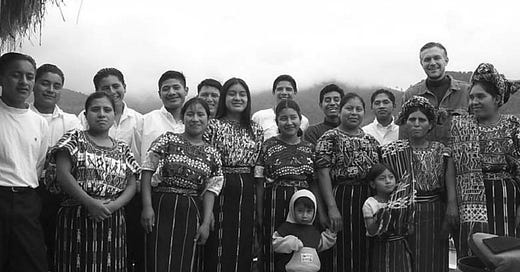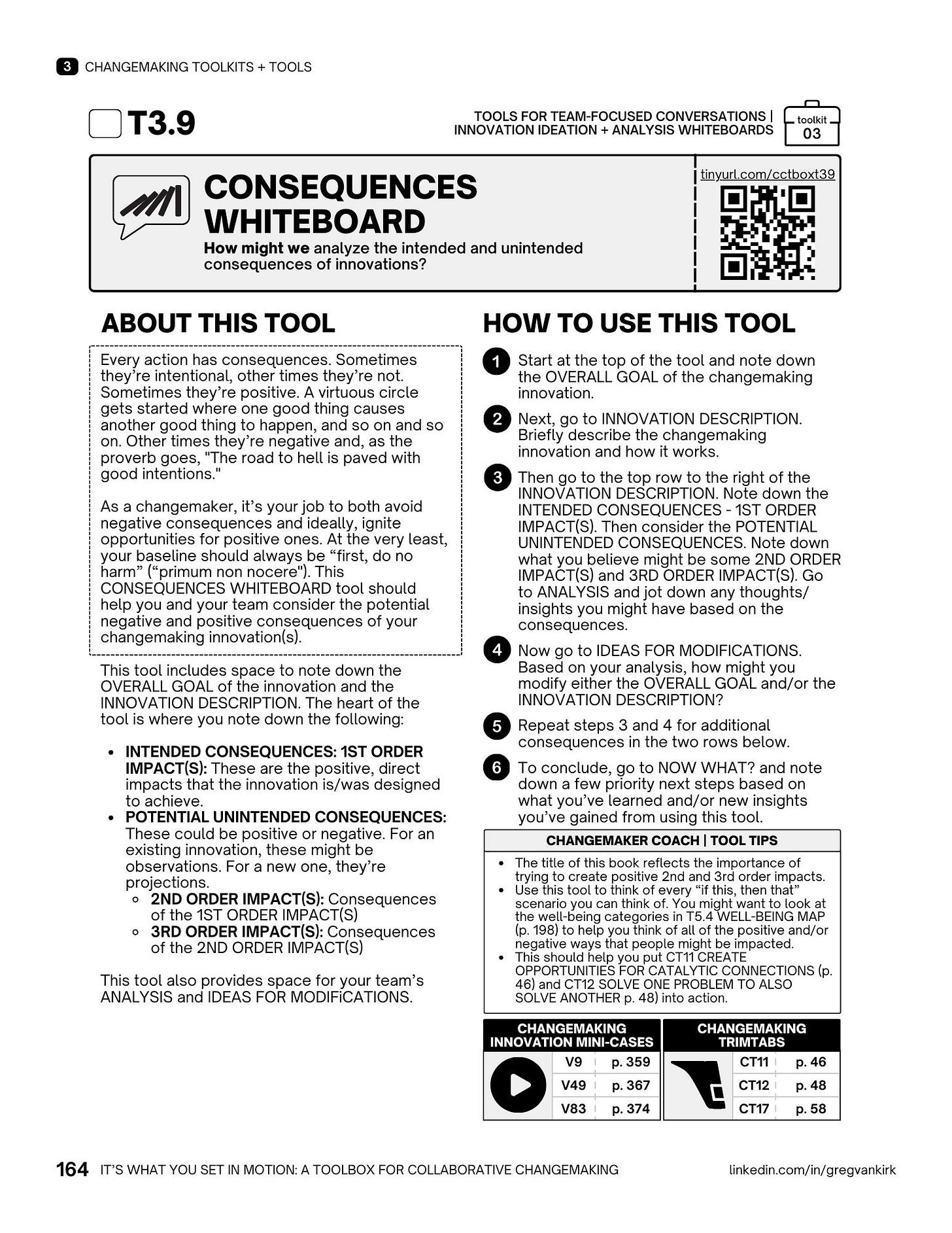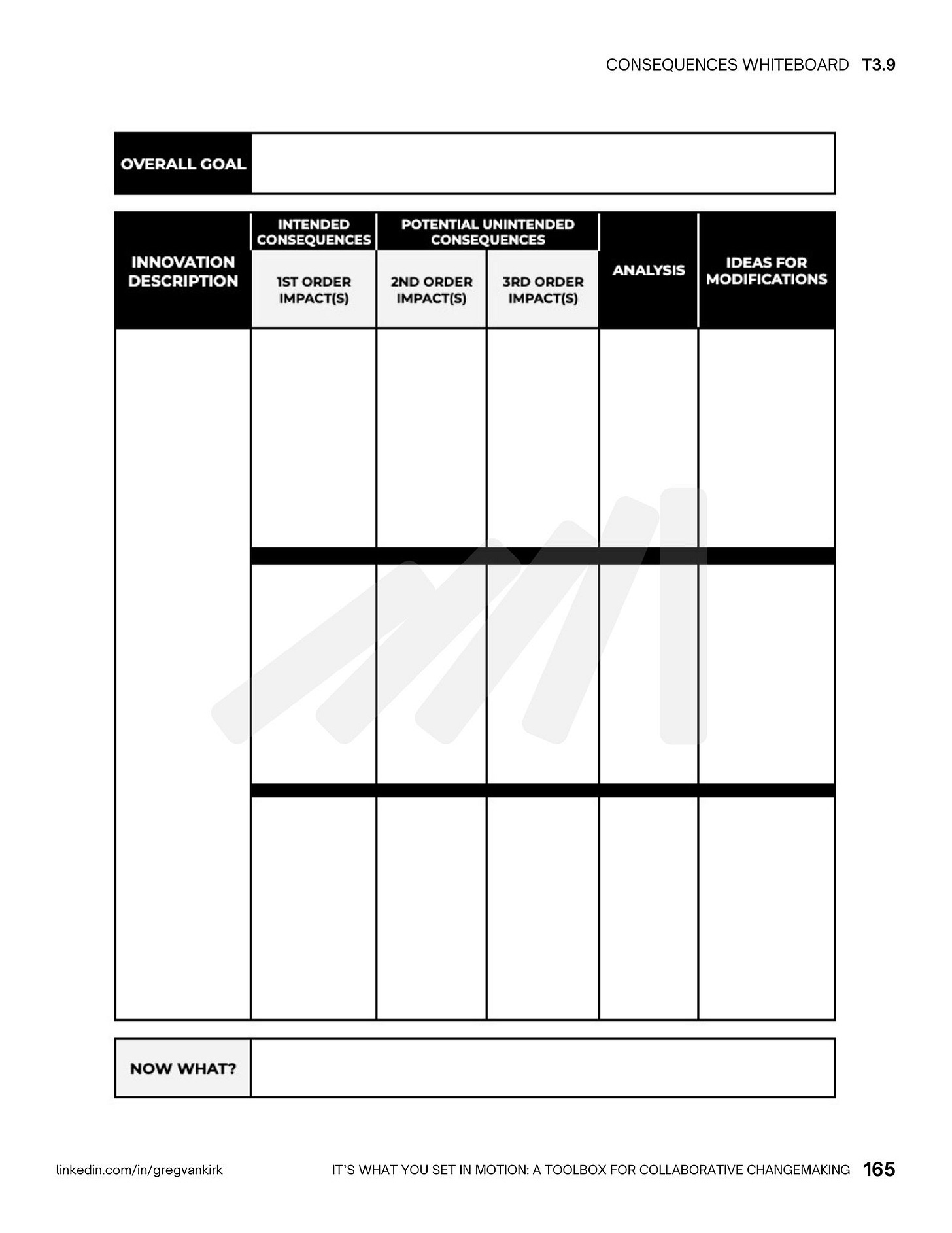21 tools for my "Peace Corps Time Machine"
Tools that you can now have, that I wish I would have had as a Peace Corps Volunteer way back when in Nebaj, Guatemala
*Today’s free tool: T3.9 CONSEQUENCES WHITEBOARD
*Note: Contact me if you’d like to explore consulting, facilitation support, setting up a professional development workshop/ series, etc.
If this post isn’t relevant to the “hat” you’re currently wearing, please share it with someone who you think might benefit.
#collaboration, #social impact, #empathy, #community engagement, #volunteering, #service learning, #social innovation, #social entrepreneurship, #CSR, #foundations, #nonprofits
Serendipitously, it’s Peace Corps Week 2024! Que bueno!
Don’t get me wrong, I had wonderful trainers and a great three months of training when I landed in Guatemala. But, although I brought some helpful technical resources (i.e. how to build a cookstove, how to give a “charla” etc.) to my site, I mostly had to design my own “how to” resources for community engagement, team building, diagnosis, prioritization, design, etc. And I’ve been designing “how to” tools and resources ever since. I wrote/ designed my new book (toolbox) to help others take advantage of what I created when I was a PCV and the 20+ years since then.
For what it’s worth, the following is a list of 21 of the tools in my book that I would put in my “Peace Corps Time Machine” to take back to younger, mostly brown-haired Greg. Of course, I would put the entire book of tools in this metaphorical DeLorean, but hopefully this list will help current PCV’s, community volunteers, etc. prioritize and think about how to use some of the tools in the book.

CT2 - LEAD WITH COMMUNITY VOICE + CHOICE
This would have helped me better prioritize making sure community members were in lead roles in problem diagnosis and solution design/ implementation.
CT4 - HELP EMPOWER WOMEN AS LAST MILE PROFESSIONALS
This is what I ended up doing with our MicroConsignment Model. I wish I had known the power of this beforehand, rather than having to realize it from experience.
CT5 - SPOTLIGHT BRIGHT SPOTS
I didn’t know about positive deviance. I probably wasted a lot of time trying to solve problems when I should have been looking for community members who had already solved them.
CT11 - CREATE OPPORTUNITIES FOR CATALYTIC CONNECTIONS
I definitely didn’t realize that relationships are everything! I was too transactional.
CT17 - FORTIFY EVERYDAY ACTIVITIES
Simple, but so powerful. Just find activities that people already enjoy doing together and add some secret sauce to them. I wish I had known this. I focused too much on creating new activities.
T1.4 OUR COLLABORATIVE CULTURE
I wish I had known these five keys to build collaborative teams. This would have shaped everything.
T2.4 STAKEHOLDER ENGAGEMENT LEVEL CHECK-IN
It was always my goal to “work myself out of business" and make sure community members were taking the lead. I wish I had a tool to be more intentional about having conversations about this.
T2.8 THREATS + REWARDS CHECK-IN
I totally underappreciated how much things like uncertainty, perceived status, etc. affect us and shape how we act.
T3.9 CONSEQUENCES WHITEBOARD
I knew about trying to avoid unintended negative consequences, but it would have been great to have a conversation tool like this to be able to talk about the positive and negative consequences of ideas, programs, etc. with community members. They certainly knew them better than me.
T4.2 PROBLEM TREE ANALYSIS
This would have been a go-to tool for all of my meetings with community members.
T5.3 EMPOWERMENT MAP
I designed this seven years after I was a PCV to try to be as intentional as possible about figuring out where people are empowered, where they aren’t, and where we might add value. It would have been great to have this on DAY 1 in Guatemala.
T5.4 WELL-BEING MAP
I don’t think I appreciated all of the factors of well-being and how interconnected they are. This would have been very helpful for conversations with women’s groups in particular
T6.3 EQUITABLE ACCESS MAP
So much of my work was about creating equitable access. I couldn’t have even articulated that at the time, let alone did I have a methodical way for how to analyze it.
T6.5 SYSTEM STATUS MAP
I definitely didn’t have an understanding of how systems/ situations are chaotic, complex, complicated, or simple and how this classification should inform actions/ responses.
T7.1 LOGIC MODEL BLUEPRINT
I wish I had known about desired outcomes and how to build strategies that are all about driving towards these. I think I was too hung up on outputs.
T7.3 SUCCESS INDICATORS BLUEPRINT
Boy, it would have been nice to be more systemic and creative about indicators of success. I wish I had this list to work off of and be more strategic about the difference between short-term, medium-term, and long-term indicators.
T9.2 COMMUNITY OF PRACTICE STRATEGY DESIGN
We intuitively formed some CoP’s. It would have been nice to have had a tool to help out.
T11.1 KEYS TO INNOVATION ADOPTION
I didn’t know these keys. I designed more for access than adoption. Adoption is everything! if people aren’t using solutions they may as well not exist. Put this in the front seat of the time machine.
T11.2 PRICING FOR ADOPTION STRATEGY
I didn’t realize all of the different ways you could price and how different ways would affect behavior. (Note - A donation has a price.)
T11.4 MOTIVATORS + CAPABILITIES STRATEGY
I focused too much on personal and structural motivators and capabilities. I didn’t realize that the social ones are usually the most important.
T12.5 TOUCHPOINT STRATEGY
It would have been nice to have had this to be more intentional about why and how to structure touchpoints with community members.
EXTRA: ALL OF THE CHANGEMAKING INNOVATION MINI-CASES
I would have watched all of the videos with community members as a way to spark creative conversations and co-create new solutions.
I hope you found this helpful. Please do reach out to me at gregvankirk@gmail.com or on LinkedIn if I can be of help. And if you haven’t purchased IT’S WHAT YOU SET IN MOTION: A TOOLBOX FOR COLLABORATIVE CHANGEMAKING, go to collaborativechangemaking.com.
And please share this with anyone who you think might benefit. Much appreciated!





